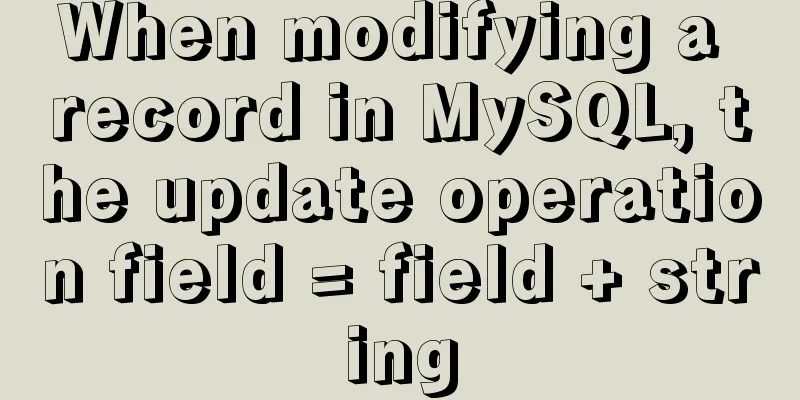JavaScript BOM location object + navigator object + history object

|
Preface: The window object provides us with a 1. Location Object1. URL The general syntax of a URL is:
2. Properties of the location object
We can use these properties to get the corresponding information in the address bar, for example:
Or we can directly enter the corresponding attributes in the console to get the corresponding return value.
For example, we now make an effect of clicking a button to jump to the page:
<body>
<button>Jump</button>
<div></div>
<script>
var btn = document.querySelector('button');
var div = document.querySelector('div');
var timer = 5;
btn.addEventListener('click',function(){
time()
})
var time = setInterval(function(){
if(timer == 0) {
this.location.href = 'https://www.baidu.com'
}
else{
div.innerHTML = 'The page will jump after '+timer+' seconds'
timer--;
}
},1000);
</script>
</body>
The running results are:
3. Location object methods
For example, we can also jump to the page by using the location object method:
<button>Click to jump</button>
<script>
var btn = document.querySelector('button');
btn.addEventListener('click',function(){
location.assign('https://www.baidu.com')
})
</script>
The jump achieved by 2. Navigator Object
if((navigator.userAgent.match(/(phone|pad|pod|iPhone|iPod|ios|iPad|Android|Mobile|BlackBerry|IEMobile|MQQBrowser|JUC|Fennec|wOSBrowser|BrowserNG|WebOS|Symbian|Windows Phone)/i))) {
window.location.href = ""; //mobile phone} else {
window.location.href = ""; //computer}
3. History Object The three most commonly used methods are:
For example, if we have two pages and want to use one button to go forward and backward, we can bind the forward method and history method to the buttons of the two pages respectively, as shown below:
<body>
<a href="list.html" rel="external nofollow" >Go to the list page</a>
<button>Forward</button>
<script>
var btn = document.querySelector('button');
btn.addEventListener('click',function(){
history.forward()
})
</script>
</body>
<body>
<a href="index.html" rel="external nofollow" >Return to the main page</a>
<button>Back</button>
<script>
var btn = document.querySelector('button');
btn.addEventListener('click',function(){
history.back()
})
</script>
</body>
The effect is:
Or we can use This is the end of this article about You may also be interested in:
|
<<: CSS3 speeds up and delays transitions
>>: Implementation of Nginx Intranet Standalone Reverse Proxy
Recommend
MySQL character types are case sensitive
By default, MySQL character types are not case-se...
Linux performance monitoring tool nmon installation and usage tutorial analysis
1. Introduction to nmon Nmon (Nigel's Monitor...
MySQL database development specifications [recommended]
Recently, we have been capturing SQL online for o...
Linux command line operation Baidu cloud upload and download files
Table of contents 0. Background 1. Installation 2...
How to modify mysql to allow remote connections
Regarding the issue of MySQL remote connection, w...
How to use css overflow: hidden (overflow hiding and clearing floats)
Overflow Hide It means hiding text or image infor...
Detailed explanation of building a continuous integration cluster service based on docker-swarm
Preface This article is just a simple record of m...
How to install and configure the supervisor daemon under centos7
Newbie, record it yourself 1. Install supervisor....
How to change the color of the entire row (tr) when the mouse stops in HTML
Use pure CSS to change the background color of a ...
Detailed tutorial on installing Ubuntu 19.10 on Raspberry Pi 4
Because some dependencies of opencv could not be ...
MySql 5.7.21 free installation version configuration method under win10
1. Unzip to the location where you want to instal...
Difference and principle analysis of Nginx forward and reverse proxy
1. The difference between forward proxy and rever...
How to enable remote access permissions in MYSQL
1. Log in to MySQL database mysql -u root -p View...
JavaScript to achieve uniform animation effect
This article example shares the specific code for...
HTML insert image example (html add image)
Inserting images into HTML requires HTML tags to ...

















